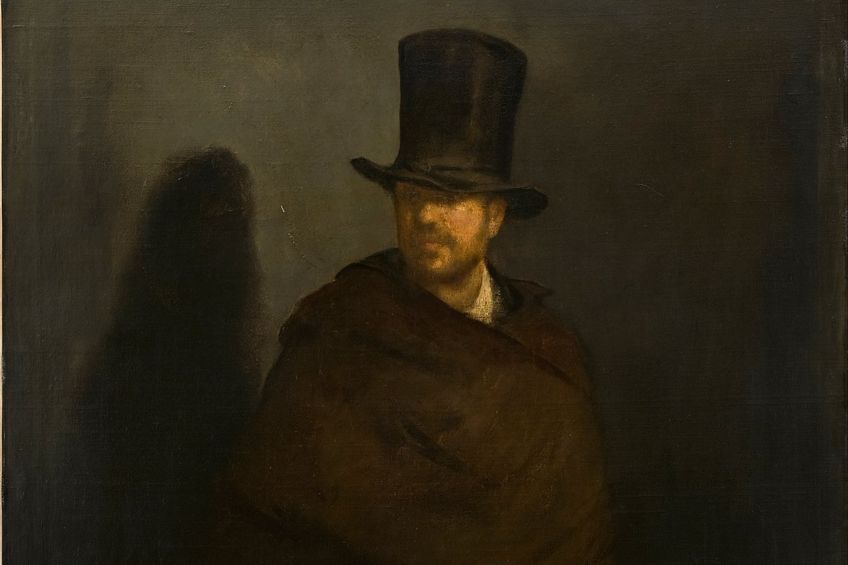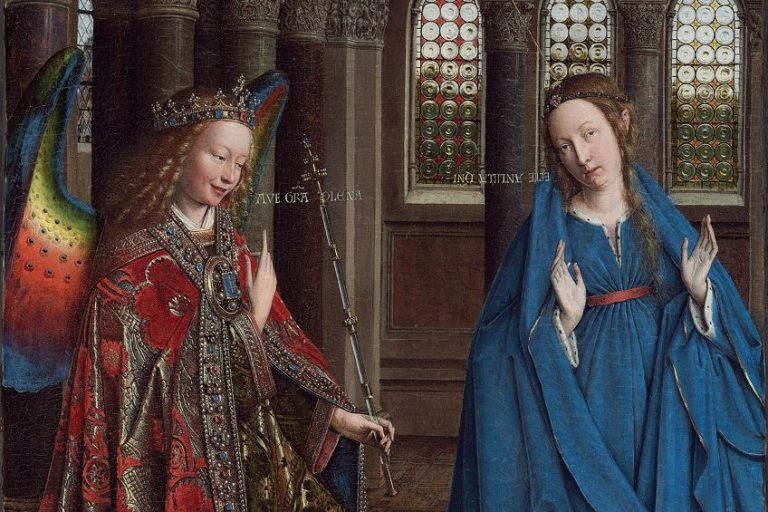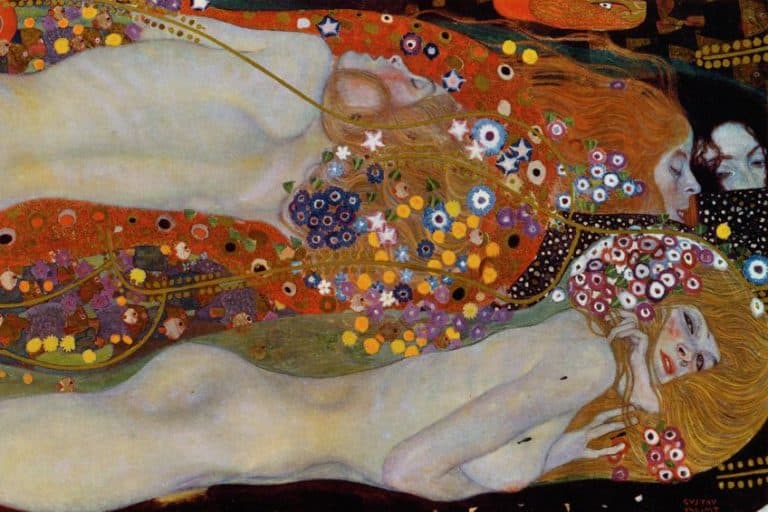“The Absinthe Drinker” by Édouard Manet – Social Isolation in Art
Édouard Manet’s “The Absinthe Drinker” is a compelling masterpiece that captures the bohemian spirit of 19th-century Paris. Painted in 1859, the artwork is a poignant portrayal of a man immersed in the ritualistic consumption of absinthe, a notorious and controversial beverage of the time. This analysis will scrutinize the composition, symbolism, and overarching significance of the work, shedding light on the artist’s meticulous choices and the profound cultural implications embedded in the artwork.
Table of Contents
Key Takeaways
- Manet’s The Absinthe Drinker captures 19th-century Parisian bohemian life, challenging norms and reflecting Absinthe’s impact on art and culture.
- With meticulous composition and bold brushstrokes, the painting signals a shift to modernist art, breaking from academic norms and influencing avant-garde movements.
- A pivotal work in Manet’s legacy, The Absinthe Drinker shapes modern art by daringly portraying ordinary life, societal issues, and controversial subjects.
Historical Context
| Artist | Édouard Manet (1832 – 1883) |
| Date Created | 1859 |
| Medium | Oil on canvas |
| Genre | Genre painting, Realism |
| Period/Movement | Transition from Realism to Impressionism |
| Dimensions (cm) | 180.5 x 105.6 |
| Series/Versions | N/A |
| Where Is It Housed? | Ny Carlsberg Glyptotek, Copenhagen, Denmark |
| What It Is Worth | Valuation information not provided |
In the mid-19th century, the painting “The Absinthe Drinker” emerged as Édouard Manet’s first original work, garnering attention and critique within the artistic scene of Paris. This piece would later underscore Manet’s burgeoning reputation, challenging the artistic norms of his time.
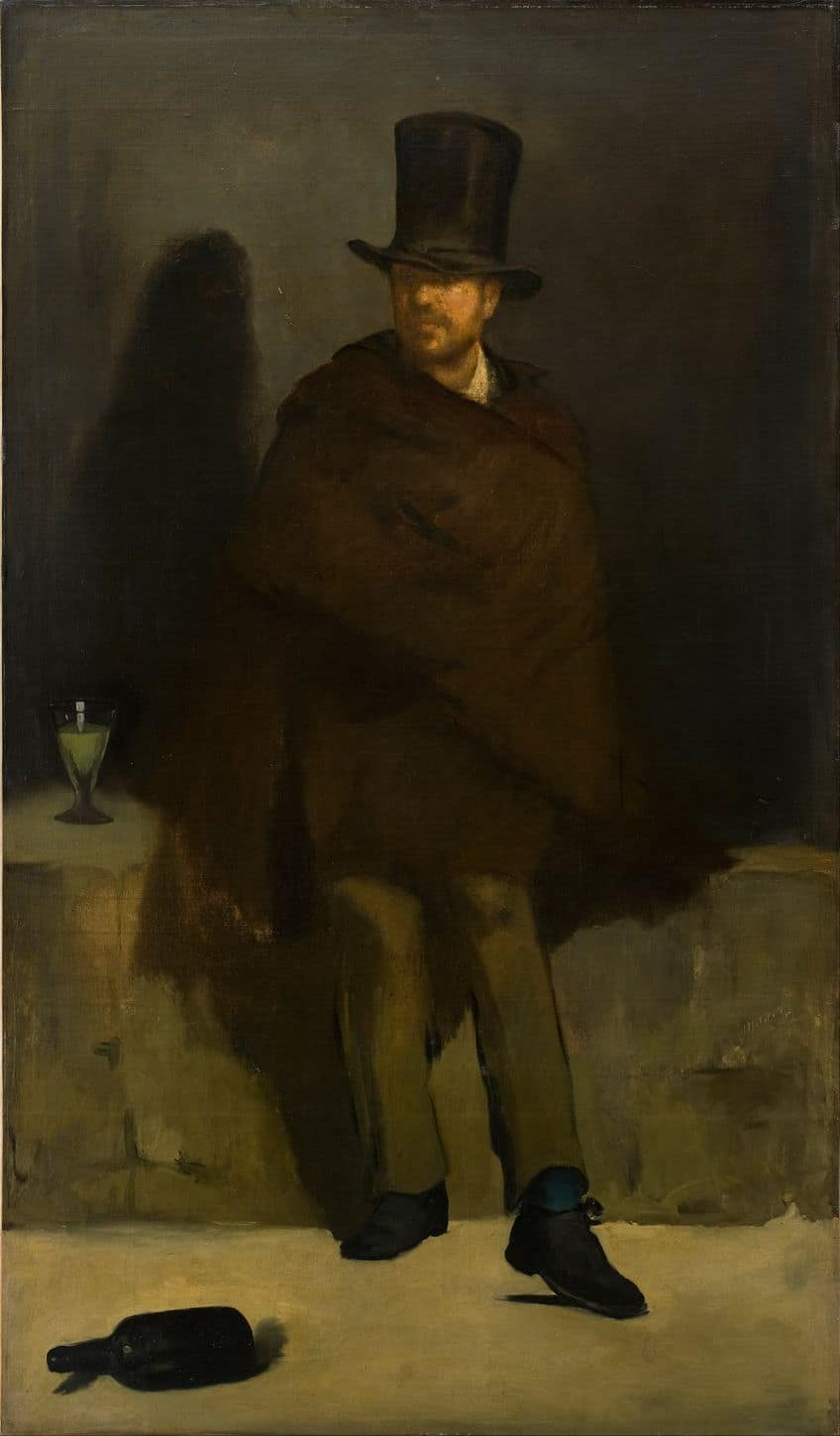
The Rise of Absinthe Culture in Paris
Absinthe, a potent, anise-flavored spirit, became increasingly popular in Paris during the 19th century, earning the moniker “The Green Fairy” among the bohemian society. The drink was often associated with artists, writers, and intellectuals, such as Charles Baudelaire, who celebrated its effects and incorporated its presence into their creative and public lives.
Manet’s “The Absinthe Drinker” was a reflection of this cultural trend, capturing not just the spirit’s physical presence but its societal implications as well. He presented absinthe not through the lens of aristocracy, traditionally revered in art, but by depicting it alongside a marginalized figure, perhaps a representation of the darker side of absinthe’s grip on Parisian society.

Despite—or perhaps because of—its authenticity and raw depiction of contemporary life, Manet’s painting was rejected by the Paris Salon, the official art exhibition of the Académie des Beaux-Arts in Paris. Among the jurors, only Eugène Delacroix, himself a celebrated artist, showed support for the piece. Manet’s daring subject matter and modern approach placed him outside the Salon’s accepted standards, which favored traditional themes and techniques influenced by predecessors such as Thomas Couture and Diego Velázquez.
The painting’s rejection did not deter Manet. Instead, it highlighted the artist’s departure from conventional artistry and prefigured his later role in the avant-garde movements.
The “Salon des Refusés,” instituted by Napoleon III, would later become a haven for such rejected works, validating the endeavors of Manet and his contemporaries in the pursuit of a new artistic language.
Formal Analysis
The work “The Absinthe Drinker” by Édouard Manet is a striking example of the transition to modernist art, showcasing distinct composition, color choices, and symbolic depth which reflects the shift in focus from aristocracy to more common subjects like the chiffonnier depicted.
Composition and Color Palette
The composition centers around the solitary figure of the chiffonnier, an urban rag-picker, who is set against a muted background. The figure is positioned off-center, with ample space to his right, creating a visual imbalance that adds to the painting’s contemplative mood. Manet employs a constrained color palette dominated by browns, greys, and black tones.
This serves to reinforce the somber and introspective atmosphere.
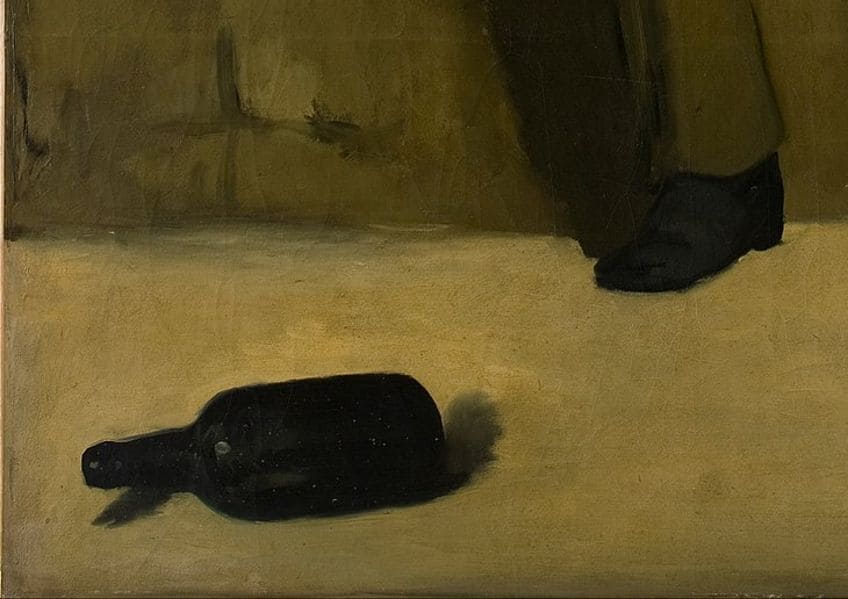
Symbolism and Interpretation
Contrasting with the elite aristocrat, Manet’s choice of a downcast chiffonnier as his subject conveys themes of social isolation and marginalization. The figure’s downcast eyes and the absence of engagement with the viewer could imply introspection or despondence. Significantly, the top hat worn by the figure, traditionally associated with the bourgeoisie, hints at a fall from grace.
This results in the blurring of class lines, evoking broader social commentary.

Technical Aspects and Manet’s Style
Manet’s technique is marked by bold, fluid brushstrokes that give a sense of immediacy to the portrait. His style diverges from the meticulous finish of classical painting, instead opting for a more direct and less polished approach. This is especially visible in the rendering of the chiffonnier’s legs and clothing, where the brushstrokes are visibly loose yet intentional. Manet’s “The Absinthe Drinker” is a testament to his pioneering role in modern art.
Through its composition, symbolic content, and technical execution, it breaks from traditional academic norms and encapsulates the evolving human condition within the Parisian society of the time.
Cultural and Social Impact
The Absinthe Drinker by Édouard Manet is not only a significant piece in the world of art but also a reflection of the societal attitudes and cultural phenomenons associated with absinthe in the 19th century.

Absinthe’s Influence on Art and Society
This work, depicting a man portrayed as morally degenerate and an alcoholic, embodied the controversial reputation of absinthe in the public eye. Critics deemed the drink as a corrupter of society, and its consumers were often viewed with moral suspicion. Charles Baudelaire, a prominent figure in French literature, had a particular fascination with absinthe, which influenced his works, notably Les Fleurs du Mal.
The painting itself, while criticized for technical faults, highlighted the profound impact of absinthe on contemporary subjects, which Manet boldly brought to the forefront of his art.
The notoriety of absinthe extended into the art world, with artists such as Gustave Courbet and Jean-Baptiste Faure, an acclaimed opera singer and art collector, finding intrigue and inspiration in its green hues and the societal fascination it commanded. Manet featured mundane and real-life themes in his work, a direction that was also explored by these artists. His incorporation of these elements on a large scale work challenged the norms and paved the way for modern approaches to art.
Modern Perception and Artistic Legacy
Moving forward, The Absinthe Drinker and themes of absinthe in art have come to be appreciated for their honest depiction of contemporary life. Manet, with works such as The Old Musician and the controversial Absinthe Drinker, set the precedent for what would become significant motifs in modern works. In terms of legacy, Manet’s risky yet influential pieces caught the attention of Paul Durand-Ruel, an important art dealer who later played a crucial role in the recognition of Impressionists.

Manet’s choice to depict the ordinary, capturing the raw essence of society through characters like street singers inspired by Aesop, the philosopher Menippus, or the dancers depicted in Watteau’s ‘L’Indifférent’, became recognized as a pivotal shift that influenced generations of artists. The simple yet poignant portrayal of a mere glass of absinthe, symbolic of the larger societal issues, continues to resonate as an anchor of Manet’s artistic influence, guiding the narrative of modern art history.
In summary, Édouard Manet’s The Absinthe Drinker is a groundbreaking portrayal of bohemian life, challenging artistic conventions and shaping the course of modern art through its bold composition and societal commentary. The work stands as a revolutionary testament to Manet’s artistic prowess, capturing the spirit of its time while paving the way for a new era in the world of art.
Frequently Asked Questions
How Does The Absinthe Drinker by Édouard Manet Reflect Realism Art?
The Absinthe Drinker reflects Realism through its unidealized depiction of a marginalized individual in society. Manet’s focus on contemporary subjects without romanticizing them was a hallmark of the Realist movement, challenging the epoch’s conventional academic art standards.
Where Can The Absinthe Drinker by Édouard Manet Currently Be Viewed?
The Absinthe Drinker by Édouard Manet is part of the collection at the Ny Carlsberg Glyptotek in Copenhagen. Visitors can view this significant piece of Manet’s body of work and its testament to modernist principles within the museum’s galleries.
Isabella studied at the University of Cape Town in South Africa and graduated with a Bachelor of Arts majoring in English Literature & Language and Psychology. Throughout her undergraduate years, she took Art History as an additional subject and absolutely loved it. Building on from her art history knowledge that began in high school, art has always been a particular area of fascination for her. From learning about artworks previously unknown to her, or sharpening her existing understanding of specific works, the ability to continue learning within this interesting sphere excites her greatly.
Her focal points of interest in art history encompass profiling specific artists and art movements, as it is these areas where she is able to really dig deep into the rich narrative of the art world. Additionally, she particularly enjoys exploring the different artistic styles of the 20th century, as well as the important impact that female artists have had on the development of art history.
Learn more about Isabella Meyer and the Art in Context Team.
Cite this Article
Isabella, Meyer, ““The Absinthe Drinker” by Édouard Manet – Social Isolation in Art.” Art in Context. January 29, 2024. URL: https://artincontext.org/the-absinthe-drinker-by-edouard-manet/
Meyer, I. (2024, 29 January). “The Absinthe Drinker” by Édouard Manet – Social Isolation in Art. Art in Context. https://artincontext.org/the-absinthe-drinker-by-edouard-manet/
Meyer, Isabella. ““The Absinthe Drinker” by Édouard Manet – Social Isolation in Art.” Art in Context, January 29, 2024. https://artincontext.org/the-absinthe-drinker-by-edouard-manet/.


